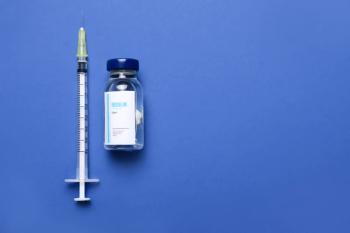The FDA approved ranibizumab injection (Susvimo) as treatment for diabetic macular edema (DME), which is the leading cause of vision loss for patients with diabetes. The therapy is now the first and only FDA-approved treatment that maintains vision for patients with DME with fewer treatments compared to standard-of-care injections.1
“Susvimo presents a unique, convenient treatment alternative to routine eye injections for people with a potentially blinding diabetic eye condition,” said Levi Garraway, MD, PhD, chief medical officer and head of global product development at Roche, said in a news release.1 “As the global prevalence of diabetic macular edema continues to grow, today's FDA approval for Susvimo reflects our dedication to innovation and enhancing the patient experience.”
The decision is based on 1-year data from the Pagoda (NCT04108156) study, which demonstrated sustained vision improvements and a consistent safety profile. The study evaluated the efficacy, safety, and pharmacokinetics of the port delivery system of ranibizumab for patients with DME who were treated every 24 weeks compared with the intravitreal treatment every 4 weeks. In the substudy, investigators evaluated the safety of re-implanting the updated port as well as the refill exchange procedure for patients that were enrolled in the main study. Up to 100 patients were included in the substudy and were followed for a maximum of 72 weeks post-re-implantation.1,2
About The Trial
Trial Name: A Study to Evaluate Efficacy, Safety & Pharmacokinetics of the Port Delivery System (PDS) With Ranibizumab in Participants With Diabetic Macular Edema (DME) Compared With Intravitreal Ranibizumab A Subtudy to Evaluate the Safety of Re-Implanting the PDS With Ranibizumab in Participants With DME (Pagoda)
ClinicalTrials.gov ID: NCT04108156
Sponsor: Hoffmann-La Roche
Completion Date (Estimated): November 2026
Investigators included patients 18 years or older with either type 1 or type 2 diabetes and a hemoglobin A1c of 10% or greater 2 months prior to or at screening. For the study eye, investigators required macular thickening secondary to DME, involving the center of fovea with central subfield thickness (CST) of 325 μ m of greater on the spectral-domain optical coherence tomography. Patients were also required to have a best-corrected visual acuity (BCVA) score of 78 to 25 letters. In the substudy, investigators either experienced a septum dislodgement in the original implant and had sufficiently clear ocular media and adequate pupillary dilation. Treatment was randomized 3:2 for either the port or the standard-of-care. Patients using the port were assessed for supplemental intravitreal ranibizumab at the 2 visits before each refill-exchange.2,3
The primary endpoint included change in BCVA score form baseline averaged over weeks 60 and 64, with additional efficacy end points of assessment of treatment preference at week 64 and evaluation of the proportion of patients with absence of intraretinal and subretinal fluid over time. There was a total of 634 eyes randomized to treatment with 381 in the port group and 253 in the standard-of-care cohort. According to the study investigators, the trial met its primary end point of noninferiority for BCVA change from baseline (mean change, letters [95% CI]: PDS Q24W, 9.6 [8.7, 1.5]; RBZ Q4W, 9.4 [8.3, 10.5]; difference [95% CI] 0.2 [–1.2, 1.6].3
As for CST, the reductions were comparable between each arm. Across 2 refills, 95.6% and 97.4% of port patients did not receive supplemental treatment, respectively, and 80% of patients indicated a preference for port treatment. The patients cited fewer treatments as the main reason of preference. The absence of intraretinal and subretinal fluid were comparable between both arms at week 64, and the port was generally well tolerated with no endophthalmitis cases through week 64.3
REFERENCES
1. FDA approves Roche’s Susvimo as the first and only continuous delivery treatment for the leading cause of diabetes-related blindness. News release. Roche. February 4, 2025. Accessed February 4, 2025. https://www.globenewswire.com/news-release/2025/02/04/3020608/0/en/FDA-approves-Roche-s-Susvimo-as-the-first-and-only-continuous-delivery-treatment-for-the-leading-cause-of-diabetes-related-blindness.html
2. A Study to Evaluate Efficacy, Safety & Pharmacokinetics of the Port Delivery System (PDS) With Ranibizumab in Participants With Diabetic Macular Edema (DME) Compared With Intravitreal Ranibizumab A Subtudy to Evaluate the Safety of Re-Implanting the PDS With Ranibizumab in Participants With DME (Pagoda). ClinicalTrials.gov identification: NCT04108156. Updated October 15, 2024. Accessed February 4, 2025. https://clinicaltrials.gov/study/NCT04108156
3. Malhotra V, Klufas MA, Marcus DM, Graff JM, et al. Port Delivery System With Ranibizumab (PDS) in diabetic macular edema (DME): additional primary analysis results of the phase 3 Pagoda trial. Invest Ophthalmol Vis Sci. 2024. https://iovs.arvojournals.org/article.aspx?articleid=2794895



















































































































